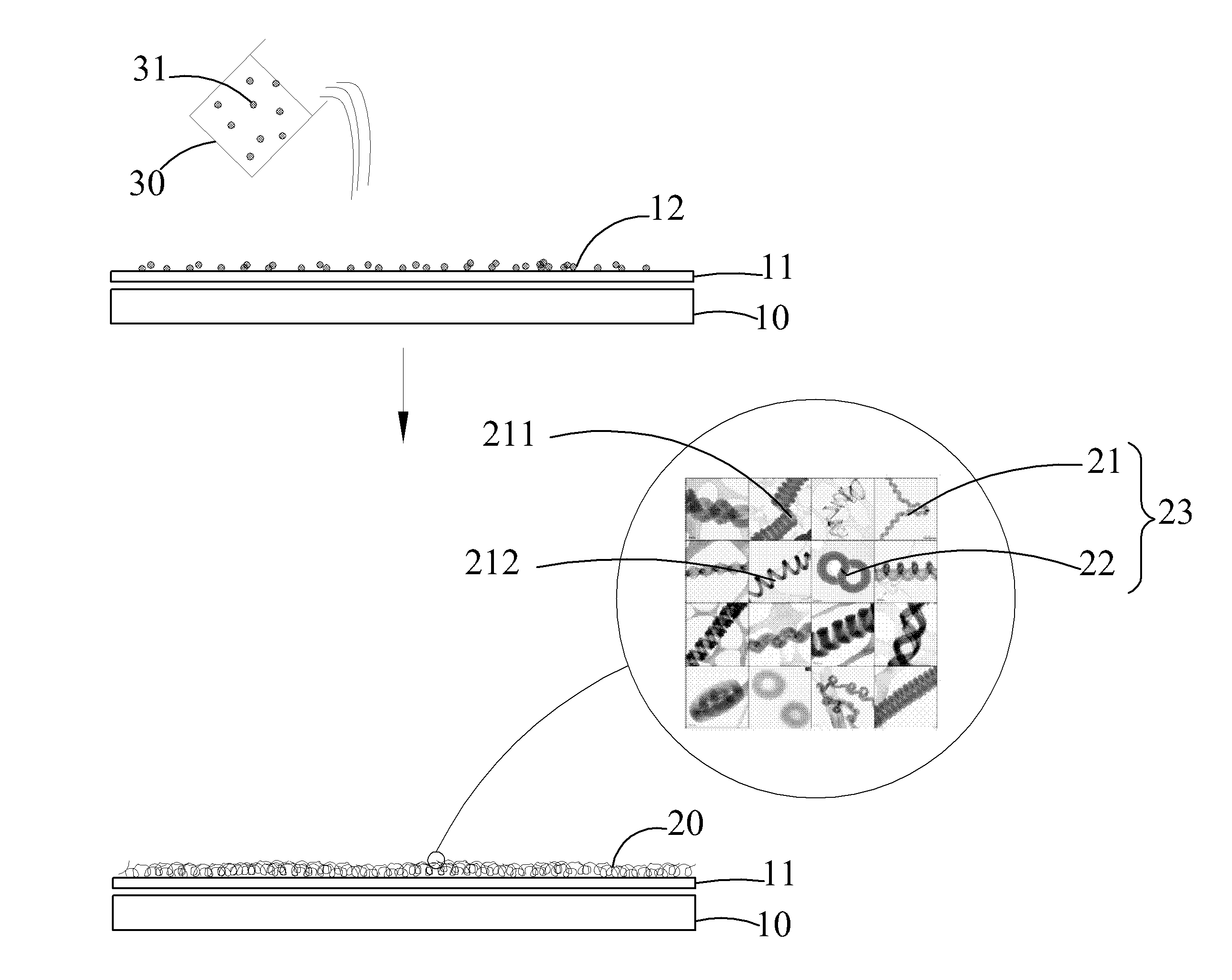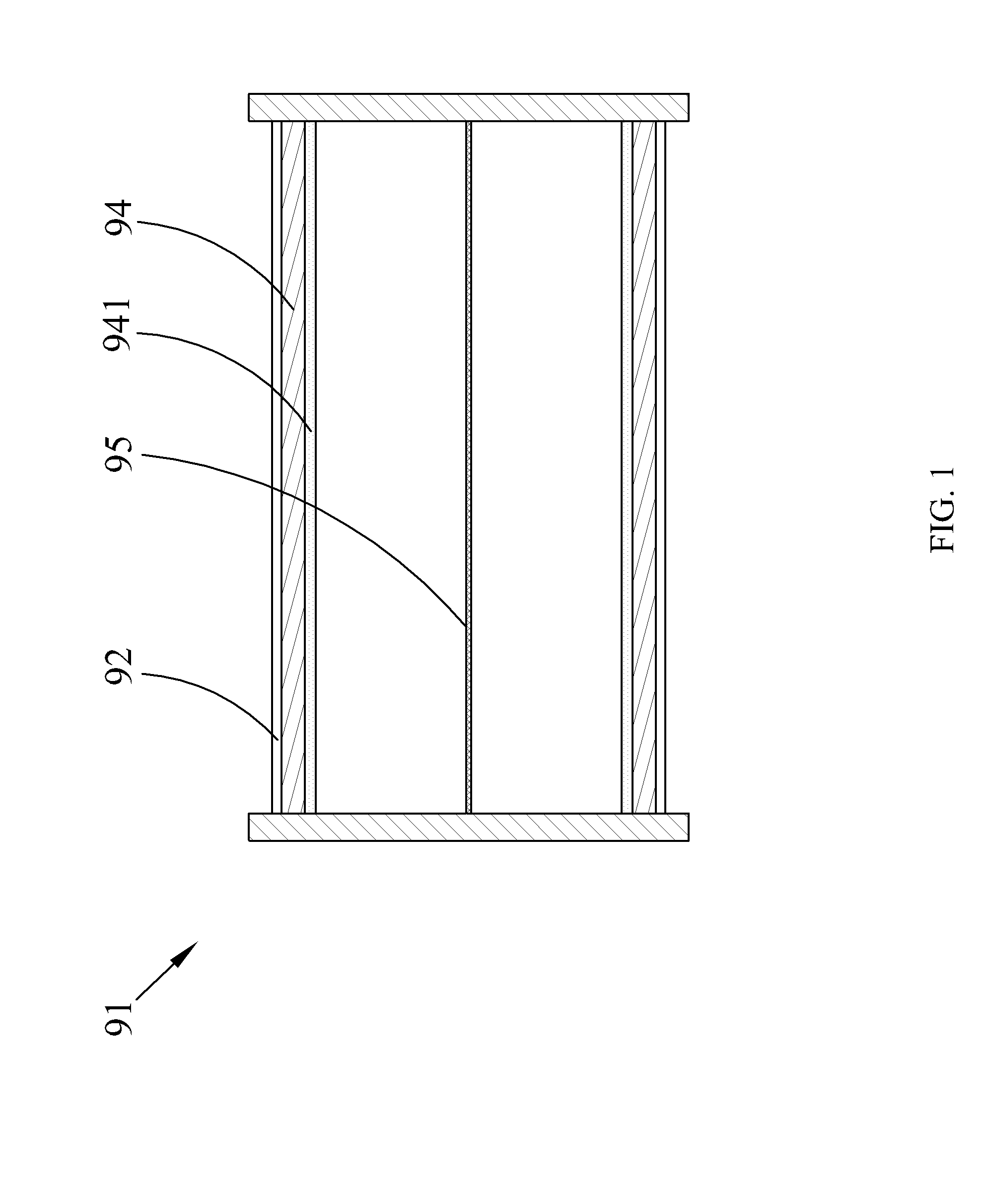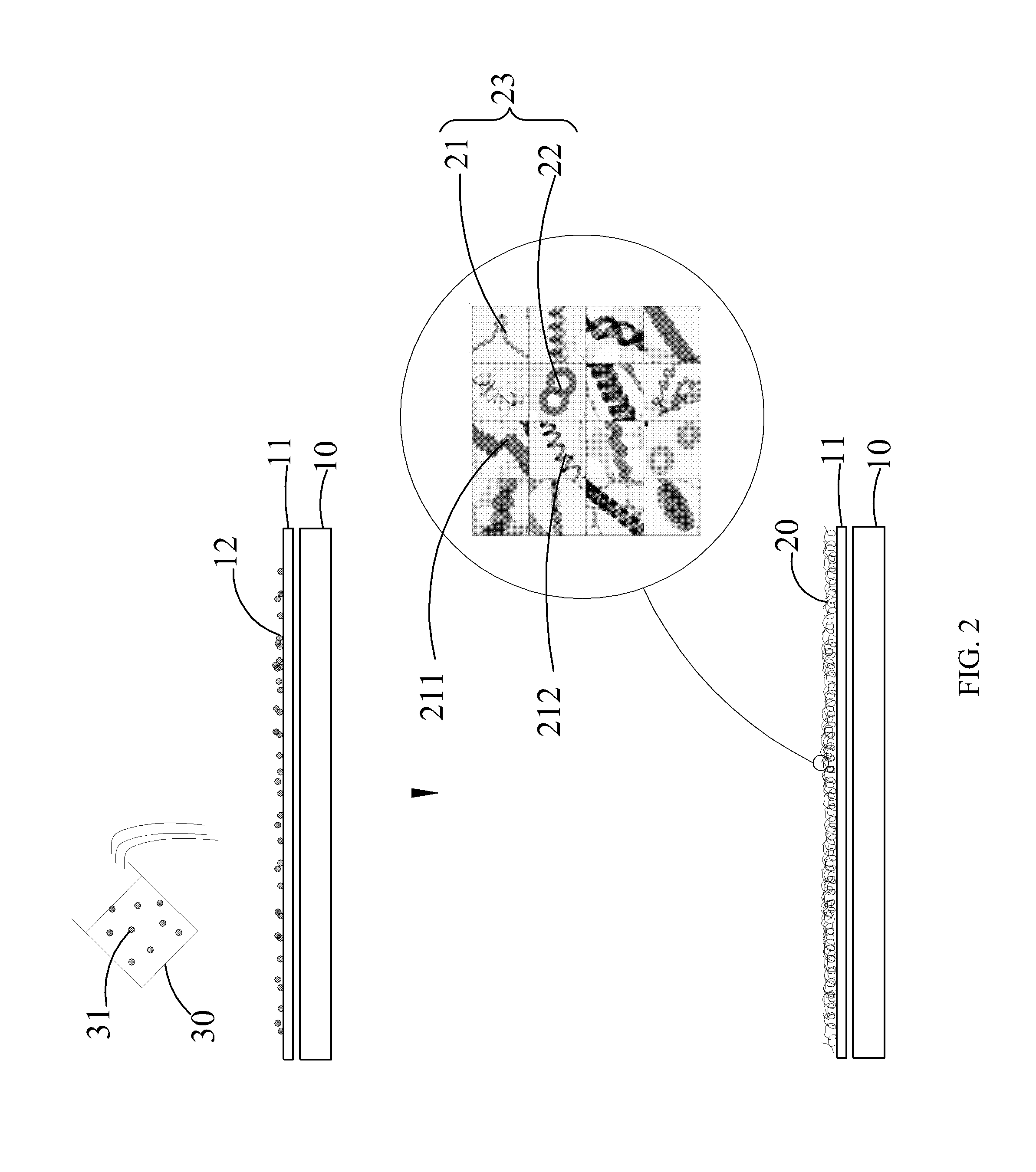Method for fabricating field emission cathode, field emission cathode thereof, and field emission lighting source using the same
a field emission cathode and lighting source technology, applied in the manufacture of electrode systems, electric discharge tubes/lamps, discharge tubes luminescnet screens, etc., can solve the problems of high cost, difficult to mass produce field emission lighting sources, and high instrument costs used in this process, so as to improve field emission characteristics and reduce labor costs. , the effect of high fractional yield
- Summary
- Abstract
- Description
- Claims
- Application Information
AI Technical Summary
Benefits of technology
Problems solved by technology
Method used
Image
Examples
first embodiment
The First Embodiment
[0107]In the present embodiment, the method for fabricating field emission cathode 4 of the present disclosure utilizing different predetermined growth temperature Tk is performed. The material of the cathode substrate 10 utilized in the present embodiment is majorly made of iron-cobalt-nickel alloy (#304 stainless steel) metal filament. The metal filament is first cleaned by physical sand blasting, then a metal conductive layer 11 is electroless plated on the metal filament. The metal conductive layer 11 of the cathode substrate 10 is washed, cleaned, and rinsed with acetone and water, and then dried (refer to step S1). The electroless plated metal filament (cathode substrate 10) is subsequently immersed in the noble metal catalyst solution 30 for 20 min (refer to step S2), where a compound of palladium chelated copolymer of styrene monomer and N-isopropylacrylamide monomer (Pd(styrenea-co-NIPAAmb)) is used as the organic chelated noble metal catalyst 31 of the ...
second embodiment
The Second Embodiment
[0113]In the present embodiment, the method for fabricating field emission cathode 4 of the present disclosure utilizing different predetermined growing time is performed. The material of the cathode substrate 10 utilized in the present embodiment is majorly made of iron-cobalt-nickel alloy (#304 stainless steel) metal filaments, where the cathode substrate 10 is first cleaned by physical sand blasting, and then a metal conductive layer 11 with nickel is electroless plated on the metal filaments; the metal conductive layer 11 is washed, cleaned, and rinsed with acetone and water, and then dried (refer to step S1). The nickel plated metal filaments (cathode substrate 10) is subsequently immersed in the noble metal catalyst solution 30 for 20 min (refer to step S2), where a compound of palladium chelated copolymer of styrene monomer and N-isopropylacrylamide monomer (Pd(styrenea-co-NIPAAmb)) is used as the organic chelated noble metal catalyst 31 of the noble meta...
third embodiment
The Third Embodiment
[0117]In the present embodiment, the method for fabricating field emission cathode 4 of the present disclosure utilizing different predetermined growth temperature Tk is performed. The material of the cathode substrate 10 utilized in the present embodiment is majorly made of iron-cobalt-nickel alloy (#304 stainless steel) metal filaments, where the cathode substrate 10 is first immersed in 10% HCl for 30 seconds, following by washing with water, and then dried (refer to step S1); the metal filament (cathode substrate 10) is subsequently immersed in the noble metal catalyst solution 30 for 30 min to 60 min (refer to step S2), where PdCl2 is used as the noble metal catalyst 31 of the noble metal catalyst solution 30, and the concentration of the PdCl2 is ranged from 300 ppm to 1500 ppm, which depends on the metal filament immersing time. Next, the metal filaments (cathode substrate 10) is placed in the atmosphere chamber and dried in 100° C., the remained moisture ...
PUM
 Login to View More
Login to View More Abstract
Description
Claims
Application Information
 Login to View More
Login to View More - R&D
- Intellectual Property
- Life Sciences
- Materials
- Tech Scout
- Unparalleled Data Quality
- Higher Quality Content
- 60% Fewer Hallucinations
Browse by: Latest US Patents, China's latest patents, Technical Efficacy Thesaurus, Application Domain, Technology Topic, Popular Technical Reports.
© 2025 PatSnap. All rights reserved.Legal|Privacy policy|Modern Slavery Act Transparency Statement|Sitemap|About US| Contact US: help@patsnap.com



